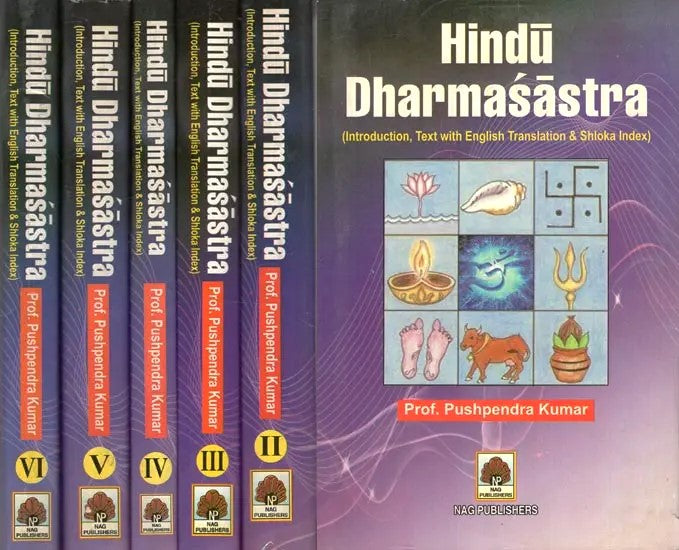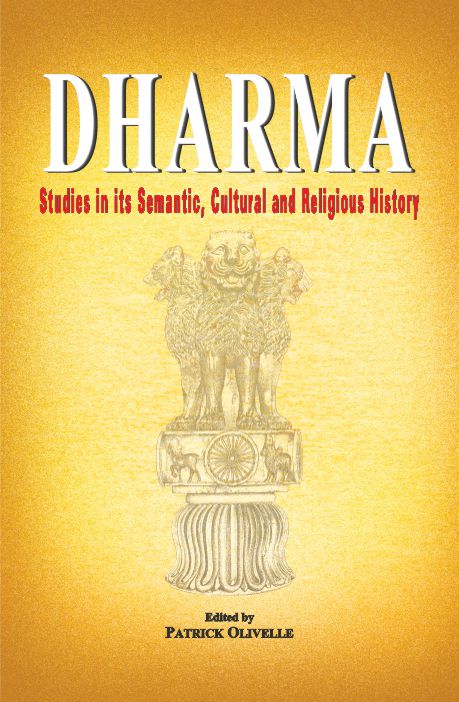

· By Motilal Banarsidass
Unveiling the Depth of Dharma Shastra: Exploring Ancient Wisdom for Modern Living
Dharma Shastra, rooted in the rich tapestry of Hindu philosophy, stands as a repository of timeless principles governing human conduct and societal order. These sacred texts, authored by revered sages such as Manu, Yajnavalkya, and Narada, offer profound insights into ethics, law, governance, and spiritual practice.
Unravelling Dharma Shastra
Dharma, the cornerstone of Hindu philosophy, encompasses the principles of righteousness, duty, and moral order. Dharma Shastra, often termed the science of righteous living, elucidates the intricate web of moral obligations and societal norms that guide individuals in their personal and communal lives.
Exploring Key Themes:
-
Ethical Conduct and Virtue: Dharma Shastra delineates the ethical precepts that govern human behaviour, emphasizing virtues such as honesty, compassion, integrity, and self-discipline as essential pillars of righteous living.
-
Social Justice and Order: Central to Dharma Shastra is the concept of a just and harmonious societal order. These texts prescribe guidelines for equitable treatment, social justice, and the maintenance of societal harmony across diverse strata of society.
-
Legal Jurisprudence and Governance: Dharma Shastra provides a comprehensive framework for legal jurisprudence and governance. It outlines laws governing civil and criminal matters, advocates for fair administration of justice, and delineates the duties of rulers and administrators.
-
Family Dynamics and Rituals: The scriptures expound upon the sanctity of familial relationships and the importance of upholding familial duties and traditions. Additionally, Dharma Shastra prescribes rituals and ceremonies that foster spiritual harmony and familial cohesion.
Notable Works in the field of Dharmashastra
1. The History of Dharmashastra by Dr. P.V. Kane
Professor Pandurang Vaman Kane, by his monumental volumes on Dharmasastra, has placed us all in a deep debt of gratitude to him. His work is of lasting value. At a time when we are building an integrated Indian society, a dispassionate study of our Dharmasastras is essential. Through his work, we are helped to understand what is living and what is dead in the heritage which has come down to us.
Our heritage has always been changing with reference to new conditions and new pressures. The process of readaptation is now at work. In spite of many changes, the obstacles to Indian unity require to be removed. The principles which should guide us in the reorientation of our society are well brought out in Professor Kane’s volumes. They may be said to be religious and social.
2. Hindu Dharmashastra by Prof. Pushpendra Kumar
The Dharmashastra occupies a prominent place in the Sanskrit literature. It has always been a work of universal Authority. It has always served as a sourcebook of Hindu jurisprudence. It has been a veritable storehouse of information for the social, cultural, political, and religious aspects of ancient Indian society. It is the very essence of Hinduism. Its' deeper study helps in the proper understanding of the Ancient Indian Culture.
The term Dharma Shastra is generally applicable to both the Dharmashutras and the smritis. The word series is used in two senses. In a wider sense, it includes the whole ancient literature other than the Veda. But in the restricted sense smriti and Dharma Shastra are synonyms. Gautam and Vasishtha speak of smriti as one of the sources of Dharma. The series came into existence to satisfy the demand of the society for new provisions in matters of Dharma, religious and secular behavior.
The Dharma Shastras of the Hindus, are not one single book but consist of the Samhitas or Institutes of holy sages numbering twenty according to the list given by Yajnavalkya, These are namely, Manu, Atri, Vishnu, Harita, Yagnavalkya, Ushana, Angira, Yama, Apastamba, Samvarta, Katyayana, Brihaspati, Parisara, Vyasa, Sankha, Likhita, Daksha, Gautam, Satatapa and Vasistha samhitas respectively.
This collective addition will give the readers the complete text of all the twenty smrities, fully edited. The English translation is a literal one as far as it could be attempted, keeping an eye to eye on its accuracy and literary excellence.
3. Dharma by Patrick Olivelle
This is the first scholarly book devoted to the study of the term dharma within the broad scope of Indian cultural and religious history. Most generalizations about Indian culture and religion upon close scrutiny turn out to be inaccurate. An exception undoubtedly is the term dharma. This term and the notions underlying it clearly constitute the most central feature of Indian civilization down the centuries, irrespective of linguistic, sectarian, or regional differences. The nineteen papers included in this collection deal with many significant historical manifestations of the term dharma. These studies by some of the leading scholars in the respective fields will both present a more nuanced picture of the semantic history of dharma by putting contours onto the flat landscape we have inherited and spur further studies of this concept so central for understanding the cultural history of the Indian subcontinent.
Patrick Olivelle is the Chair, Department of Asian studies, where he is the professor of Sanskrit and Indian Religions. His work has covered the ascetical traditions of Indian, the Upanisads, and the Dharmasastras. Among his major publications are The Asrama System: History and Hermeneutics of a Religious Institution (Oxford, 1993), Pancatantra (1997), The early Upanisads: Annotated Text Translation (Oxford, 1998), Dharmasutra: The law Codes of Apastamba, Gautama, Baudhayana, and Vasistha (Motila Banarsidass, 2000), Manu's Code of Law: A critical edition and translation of the Manava Dharmasastra (Oxford, 2005), and Dharmasutra Parallels: Containing the Dharmasutras of Apastamba, Gautama, Baudhayana, and Vasistha (Motilal Banarsidass, 2005).
Relevance in Today's World
Despite the passage of centuries, the teachings of Dharma Shastra retain their relevance in contemporary society. In an era marked by moral ambiguity and societal discord, these ancient principles offer guidance for ethical living, social responsibility, and spiritual fulfilment.
In a rapidly evolving global landscape, the wisdom embedded in Dharma Shastra serves as a compass for individuals, communities, and policymakers navigating complex ethical and social dilemmas. By embracing the principles of dharma, we can cultivate a society characterized by compassion, justice, and mutual respect.
The teachings of Dharma Shastra shine as beacons of wisdom, illuminating the path to righteous living and societal harmony. As we delve into these ancient scriptures, we encounter not mere rules and regulations but profound insights into the essence of human existence.
In our quest for personal growth and collective well-being, let us draw inspiration from the timeless wisdom of Dharma Shastra, integrating its principles into the fabric of our lives and communities. For in upholding dharma, we honour the eternal truths that guide us towards a more enlightened and compassionate world.



